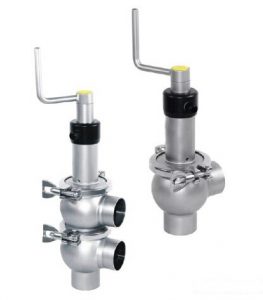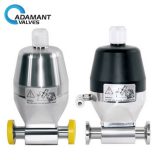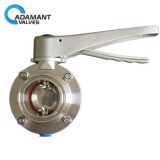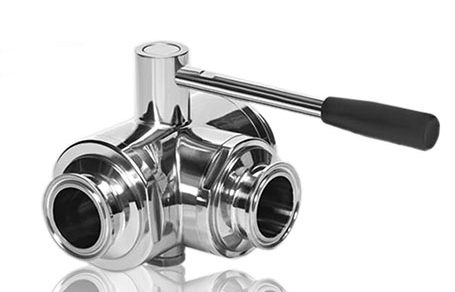Everything You Need to Know About Sanitary Shut-off Valve
A sanitary shut-off valve is a kind of mandatory sealed valve. When the valve is closed, pressure must be applied to the valve gate to ensure the sealing surface doesn’t leak. When the medium enters the valve from below the valve gate, the resistance the operating force needs to overcome is the friction between the valve stem and stuffing as well as the propulsion produced by the pressure of the medium. The force used to close the valve is bigger than the force used to open the valve, so the diameter of the valve needs to be big, otherwise, the valve stem will be bent.

What are the applications of Sanitary Shut-off Valve?
1. Needle sanitary shut-off valve
A needle sanitary shut-off valve is a small gauge globe valve that opens and closes and precisely controls flow in the instrumentation piping system. They are mainly power station instrumentation series, oilfield series, and American standard series.
2. Low-temperature sanitary shut-off valve
Low-temperature globe valves are usually globe valves with operating temperatures below -110 ° C and are widely used in LNG, liquefied petroleum gas and other cryogenic industries. From 2008 it can be made for the temperature of -196 ℃ cut-off valve, all parts of liquid nitrogen pretreatment at low temperature, completely avoid the use of seal deformation leaks.
3. Plunger sanitary shut-off valve
The sealing surface of a plunger sanitary shut-off valve is a radial seal structure. This valve has two elastic sealing rings that wrap over the polished plunger. The valve body and bonnet connection bolts apply a load on the bonnet, compressing the elastomeric seal around the plunger to seal.
4. Insulation sanitary pinch valve
The design of an insulation sanitary pinch valve uses an external heat source in the outside of the globe valve cycle heating, effectively prevent the media through the shut-off valve temperature loss, to ensure the temperature of the medium.
What are the features of Sanitary Shut-off Valve?
1. The valve uses overall forging or forged welding structure, passes the non-destructive testing. It undergoes solid solution processing. The composition of the materials is fine. The product appearance is good.
2. The valve sealing is spray-welded hard alloy. Nickel-based solder powder, Stellite alloy, tungsten carbide, and other materials can be spray-welded. The hardness can be as high as HRC65. It has excellent wear and corrosion resistance, which improves the service life of the valve.
3. Due to the characteristics of duplex steel material itself, the valve has a strong resistance to hydrogen sulfide and chloride corrosion.
4. Considering the requirement on the strength of sanitary ball valve stem caused by increased opening and closing torque after the high-temperature deposition of the water-coal slurry medium, when designing duplex steel ball valve stems, 1740H deposition hardened stainless steel is used. This material can achieve a pretty high strength after deposition hardening process, which meets the real-life requirements of valves.
5. All-forged duplex stainless steel shutoff valves use fixed-balls. The force on the sealing pairs by the medium is significantly smaller than that of the floating ball, leading to decreased opening and closing torque.
What are the advantages of Sanitary Shut-off Valve?
1. Double sealing design (bellows and filler). If the bellows fail, the valve stem filler can also act to avoid leakage.
2. Safe and environmentally friendly. No fluid loss. Energy losses are reduced. The safety of equipment at the factory can be improved.
3. Long service life means the number of maintenance is reduced and the operating cost is reduced.
4. Firm and reliable design of bellows sealing ensure zero leakage of the valve stem, providing conditions for maintenance-free.
For more information, please visit http://www.adamantvalves.com/






Recent Comments